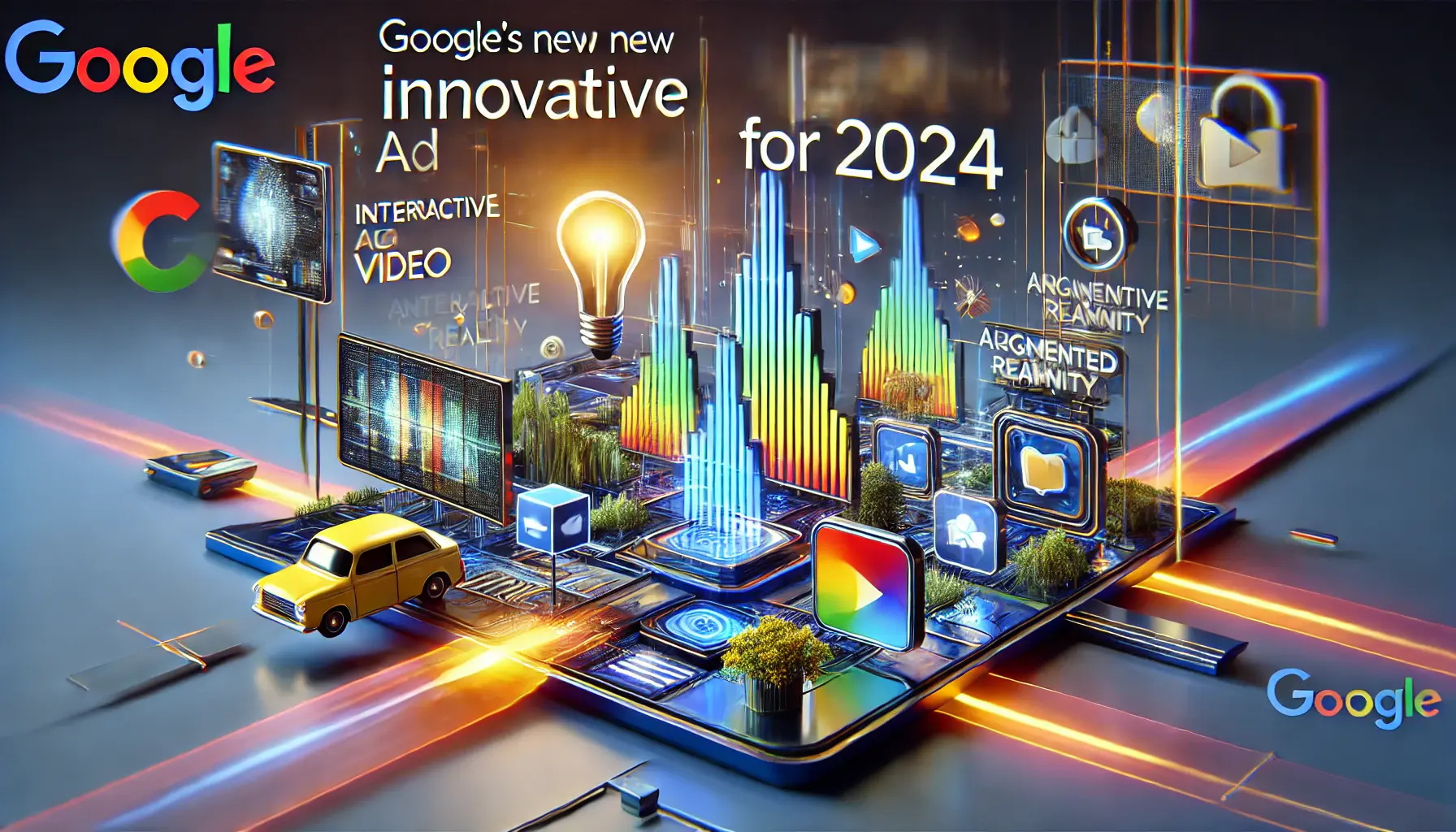Exploring the dynamic world of Facebook advertising, we delve into the concept of ‘Multiple Placements’ – a strategy that has revolutionized how businesses interact with their target audience on social media.
The essence of multiple placements lies in its ability to disseminate a single ad across various formats and locations within the Facebook ecosystem, offering a unique blend of reach and engagement.
This approach not only amplifies the visibility of an advertisement but also tailors the experience to different user preferences and behaviors.
By leveraging the diverse formats available on Facebook, advertisers can craft a more holistic and impactful advertising campaign, resonating with a broader audience spectrum.
- The Fundamentals of Multiple Placements in Facebook Ads
- Strategies for Optimizing Ad Placements on Facebook
- Maximizing Engagement Through Creative Ad Design
- Targeting and Personalization in Ad Placements
- Measuring and Analyzing Ad Performance
- Adapting to Evolving Trends and Technologies
- Embracing the Power of Multiple Placements in Facebook Advertising
- FAQs on Multiple Placements in Facebook Ads
The Fundamentals of Multiple Placements in Facebook Ads
At its core, multiple placements in Facebook Ads refer to the distribution of a single ad across various sections of the Facebook network, including the News Feed, Instagram, Messenger, and the Audience Network.
This strategy is designed to maximize the ad’s exposure, ensuring that it reaches a diverse audience across different contexts and usage patterns.
The versatility of multiple placements allows advertisers to engage with users not just on Facebook but across its extended network, enhancing the overall reach and effectiveness of their campaigns.
The concept thrives on the principle of omnipresence, ensuring that an ad is visible in multiple formats and locations, thereby increasing the likelihood of audience interaction.
This approach is particularly beneficial for businesses looking to establish a strong brand presence and engage with users across different touchpoints.
Advantages of Diverse Formats
Facebook’s diverse ad formats cater to various advertising goals and audience preferences.
From traditional image and video ads to more interactive formats like carousel and Instant Experiences, each format offers unique benefits.
Image ads, for instance, are straightforward and effective for brand awareness, while video ads can be more engaging and informative.
Carousel ads allow showcasing multiple products or features, and Instant Experiences offer an immersive, full-screen experience for deeper engagement.
By utilizing multiple formats, advertisers can not only reach a wider audience but also cater to different stages of the customer journey.
For example, a video ad can be used for storytelling and brand building, while carousel ads can drive product discovery and sales.
This flexibility in format selection enables advertisers to craft a more nuanced and effective advertising strategy.
The key to success with multiple placements lies in understanding the unique advantages of each format and strategically aligning them with campaign goals and audience preferences.
Strategies for Optimizing Ad Placements on Facebook
Effective utilization of multiple placements on Facebook requires a strategic approach, balancing the creative aspects of the ad with the technical nuances of placement optimization.
This involves not only selecting the right formats but also understanding how to best position these ads across Facebook’s diverse platforms for maximum impact.
One of the first steps in this process is to analyze the target audience’s behavior and preferences.
This insight helps in determining which formats and placements will be most effective.
For instance, younger audiences might be more engaged with video content on Instagram, while a broader demographic might be more receptive to image ads in the Facebook News Feed.
Key Strategies for Placement Optimization
- Ad Format Selection: Choose ad formats that align with your campaign objectives and audience preferences. For instance, use video ads for storytelling and brand awareness, and carousel ads for showcasing multiple products.
- Placement Customization: Tailor your ads for specific placements. For example, shorter videos might perform better on Instagram Stories, while longer formats can be more suitable for the Facebook News Feed.
- Audience Segmentation: Segment your audience based on demographics, interests, and behavior to ensure that your ads are shown to the most relevant users across different placements.
- Testing and Analytics: Regularly test different combinations of formats and placements. Use Facebook’s analytics tools to track performance and make data-driven decisions for optimization.
Another critical aspect is the creative adaptation of the ad content for different placements.
An ad that works well in the Facebook News Feed might not have the same impact when placed in the Instagram Stories format.
Therefore, it’s essential to customize the creative elements, such as the ad copy, imagery, and call-to-action, to suit the specific requirements of each placement.
Finally, leveraging Facebook’s automated placement tools can also aid in optimizing ad performance.
These tools use algorithms to determine the best placements based on the ad’s objective and audience, potentially increasing the efficiency and effectiveness of the ad campaign.
Remember, the goal is to create a cohesive and engaging user experience across all placements, ensuring that each ad is not only seen but also resonates with the audience.
Maximizing Engagement Through Creative Ad Design
Crafting creative and compelling ads is crucial in leveraging the full potential of multiple placements on Facebook.
The design and content of the ad must not only attract attention but also encourage engagement, making it essential to understand the nuances of creative ad design tailored for diverse formats.
Engagement starts with the visual appeal of the ad.
High-quality images or videos, eye-catching graphics, and a clear, concise message are fundamental.
The creative should align with the brand’s identity and message, ensuring consistency across all placements.
This consistency helps in building brand recognition and trust among the audience.
Elements of Effective Ad Creative
- Visual Impact: Use high-resolution images and videos that are visually appealing. Ensure that the visuals are aligned with the brand’s aesthetic and message.
- Clear Messaging: The ad copy should be concise and to the point, clearly conveying the value proposition and call-to-action.
- Emotional Connection: Aim to create an emotional connection with the audience. This can be achieved through storytelling, humor, or appealing to common experiences and values.
- Call-to-Action: A strong and clear call-to-action (CTA) is essential. It guides the audience on what steps to take next, whether it’s visiting a website, making a purchase, or learning more about a product or service.
Another aspect to consider is the format-specific requirements.
For instance, ads in Instagram Stories need to be visually captivating and quickly convey the message within a few seconds.
In contrast, ads in the Facebook News Feed can be more detailed and informative.
Interactive elements such as polls, quizzes, or swipe-up features in Stories can also enhance engagement, making the ad more than just a passive viewing experience.
These interactive features not only engage the audience but also provide valuable feedback and data for the advertisers.
Innovative and engaging ad design is not just about aesthetics; it’s about creating a meaningful connection with the audience, leading to higher engagement and better campaign results.
Targeting and Personalization in Ad Placements
Targeting and personalization play a pivotal role in the effectiveness of multiple placements on Facebook.
By understanding and segmenting the audience, advertisers can deliver more relevant and personalized ad experiences, significantly enhancing the impact of their campaigns.
Facebook’s robust targeting options allow advertisers to segment their audience based on demographics, interests, behaviors, and more.
This level of granularity enables the creation of highly targeted ad campaigns that resonate with specific audience segments.
Personalization, on the other hand, involves tailoring the ad content to meet the unique needs and preferences of these segments, making the ads more relevant and engaging.
Implementing Effective Targeting Strategies
- Demographic Targeting: Segment your audience based on age, gender, location, and language to ensure that your ads are reaching the right people.
- Interest-Based Targeting: Utilize Facebook’s data on user interests, such as hobbies, favorite entertainment, and shopping habits, to tailor your ads to individuals with specific interests.
- Behavioral Targeting: Target users based on their online behaviors, including purchase history, device usage, and other online activities.
- Custom Audiences: Create custom audiences from your existing customer data, such as email lists, to re-engage with past customers or leads.
Personalization extends beyond targeting; it’s about creating a connection with the audience.
This can be achieved by customizing the ad copy, imagery, and overall message to align with the interests and preferences of the target segment.
For example, ads targeting young adults might use more vibrant visuals and contemporary language, while ads targeting professionals might focus on efficiency and value.
Moreover, the use of dynamic ads on Facebook allows for automatic personalization.
These ads dynamically change their content based on the user’s interactions with the advertiser’s website or app, providing a highly personalized and relevant ad experience.
The true power of targeting and personalization lies in their ability to deliver the right message to the right audience at the right time, thereby maximizing the effectiveness of the ad placements.
Measuring and Analyzing Ad Performance
Measuring and analyzing the performance of ads across multiple placements is crucial in understanding their effectiveness and optimizing future campaigns.
Facebook provides a suite of analytics tools that offer insights into various metrics such as reach, engagement, conversion rates, and return on ad spend (ROAS).
Key performance indicators (KPIs) should be identified based on the campaign objectives.
For instance, if the goal is brand awareness, metrics like reach and impressions are vital.
For conversion-oriented campaigns, tracking click-through rates, conversion rates, and ROAS is more relevant.
Essential Metrics for Ad Performance Analysis
- Reach and Impressions: These metrics indicate the number of people who have seen the ad and how often it has been seen, respectively.
- Engagement Rate: Measures the level of interaction with the ad, including likes, comments, shares, and clicks.
- Click-Through Rate (CTR): The percentage of people who clicked on the ad after seeing it, a crucial metric for understanding ad effectiveness.
- Conversion Rate: The percentage of users who took the desired action after clicking on the ad, essential for evaluating the success of conversion-driven campaigns.
- Return on Ad Spend (ROAS): A measure of the revenue generated for every dollar spent on the ad, critical for assessing the financial effectiveness of the campaign.
It’s important to analyze these metrics not just in isolation but also in relation to each other.
For example, a high number of impressions with a low engagement rate might indicate that the ad is not resonating with the audience.
Similarly, a high click-through rate with a low conversion rate could suggest issues with the landing page or the offer itself.
Segmented analysis is also valuable.
Comparing the performance of the same ad across different placements can provide insights into where the ad is most effective and where adjustments might be needed.
This analysis helps in fine-tuning the targeting and creative strategy for each placement.
Effective measurement and analysis are not just about tracking metrics; they are about gaining actionable insights that can drive continuous improvement in ad strategy and execution.
Adapting to Evolving Trends and Technologies
In the ever-changing landscape of social media advertising, staying abreast of evolving trends and technologies is crucial for maximizing the effectiveness of multiple placements on Facebook.
As user behaviors and platform algorithms evolve, so must the strategies for ad placements and content creation.
One significant trend is the increasing use of artificial intelligence and machine learning in optimizing ad placements and targeting.
These technologies enable more efficient and effective ad delivery, ensuring that ads are shown to the most relevant audience segments at the optimal times.
Staying Ahead with Emerging Trends
- Video Content Dominance: The growing preference for video content on social media platforms necessitates a focus on creating engaging and high-quality video ads.
- Mobile-First Approach: With the majority of social media users accessing platforms via mobile devices, optimizing ads for mobile viewing is essential.
- Interactive and Immersive Formats: Leveraging new ad formats like augmented reality (AR) and virtual reality (VR) can provide more immersive and engaging experiences for users.
- Privacy-Focused Advertising: With increasing concerns over user privacy, adapting to privacy regulations and focusing on privacy-friendly targeting methods is becoming crucial.
Another aspect is the continuous evolution of user preferences and behaviors.
Advertisers must keep a pulse on these changes to ensure that their content remains relevant and engaging.
This might involve adapting the tone, style, and type of content to align with the latest user trends and preferences.
Finally, staying updated with Facebook’s algorithm changes and advertising policies is vital.
These changes can significantly impact how ads are delivered and measured, and understanding them is key to maintaining effective ad campaigns.
Adapting to trends and technologies is not just about keeping up; it’s about being proactive in leveraging these changes to create more impactful and successful ad campaigns.
Embracing the Power of Multiple Placements in Facebook Advertising
In the realm of digital marketing, the strategy of utilizing multiple placements in Facebook ads stands as a testament to the evolution and dynamism of online advertising.
This approach, harnessing the diverse formats available on Facebook, offers a unique opportunity for brands to amplify their message across a vast audience spectrum.
The key lies in understanding and leveraging the strengths of each placement option, ensuring that every ad not only reaches its intended audience but also resonates with them on a deeper level.
Integrating Strategies for Enhanced Engagement
As we have explored, the journey of creating effective Facebook ads involves several critical steps.
From optimizing ad placements and designing creative content to targeting and personalization, each aspect plays a pivotal role in the success of the campaign.
The integration of these strategies ensures that ads are not only seen but are also compelling enough to engage and convert the audience.
Adapting to the Digital Landscape
The digital landscape is ever-evolving, and so are the trends in Facebook advertising.
Staying ahead in this dynamic environment requires a keen understanding of emerging trends and technologies.
Advertisers must continuously adapt their strategies to align with these changes, ensuring that their campaigns remain effective and relevant in the face of shifting user behaviors and platform algorithms.
Key Takeaways for Maximizing Ad Impact
- Strategic Placement Selection: Choose placements wisely, aligning them with campaign goals and audience preferences.
- Creative Excellence: Invest in high-quality, engaging ad creatives that capture attention and evoke emotion.
- Targeting and Personalization: Utilize Facebook’s targeting capabilities to deliver personalized ad experiences.
- Performance Analysis: Regularly measure and analyze ad performance to refine strategies and improve outcomes.
- Adaptability: Stay flexible and adaptable, embracing new trends and technologies to maintain a competitive edge.
In conclusion, the strategy of employing multiple placements in Facebook ads offers a multifaceted approach to digital advertising.
It’s about creating a cohesive and engaging narrative across various platforms and formats, reaching audiences where they are most active and receptive.
By mastering this approach, advertisers can unlock the full potential of Facebook advertising, driving meaningful engagement and achieving their marketing objectives.
Enjoyed the article? Let its author handle your social media ads. Visit our service page to get started!
FAQs on Multiple Placements in Facebook Ads
Explore commonly asked questions about utilizing multiple placements in Facebook Ads to enhance your advertising strategy.
Multiple placements in Facebook Ads refer to the distribution of an ad across various sections of Facebook’s network, including News Feed, Instagram, and Messenger, to maximize exposure.
Adding more placements to your Facebook ad does not necessarily increase the cost.
Costs are more influenced by bidding strategies and competition for ad space.
Choose placements based on your campaign objectives and target audience.
Not all objectives support all placements, so align your choices with your marketing goals.
Yes, Facebook allows customization of ads for specific placements, ensuring that the ad content is optimized for the format and audience of each placement.
Diverse ad formats cater to different user preferences and campaign goals, enhancing engagement and effectiveness across various audience segments.
Targeting in multiple placements involves segmenting your audience based on demographics, interests, and behaviors to deliver more personalized ad experiences.
Key metrics include reach, engagement rate, click-through rate, conversion rate, and return on ad spend, each offering insights into different aspects of ad performance.
Stay updated with emerging trends and technologies, and be flexible in adapting your ad strategies to align with evolving user behaviors and platform algorithms.










